Homemade Marshmallow Frosting made from scratch with natural ingredients! It's glossy and smooth, not too sweet, and pipes like a dream.
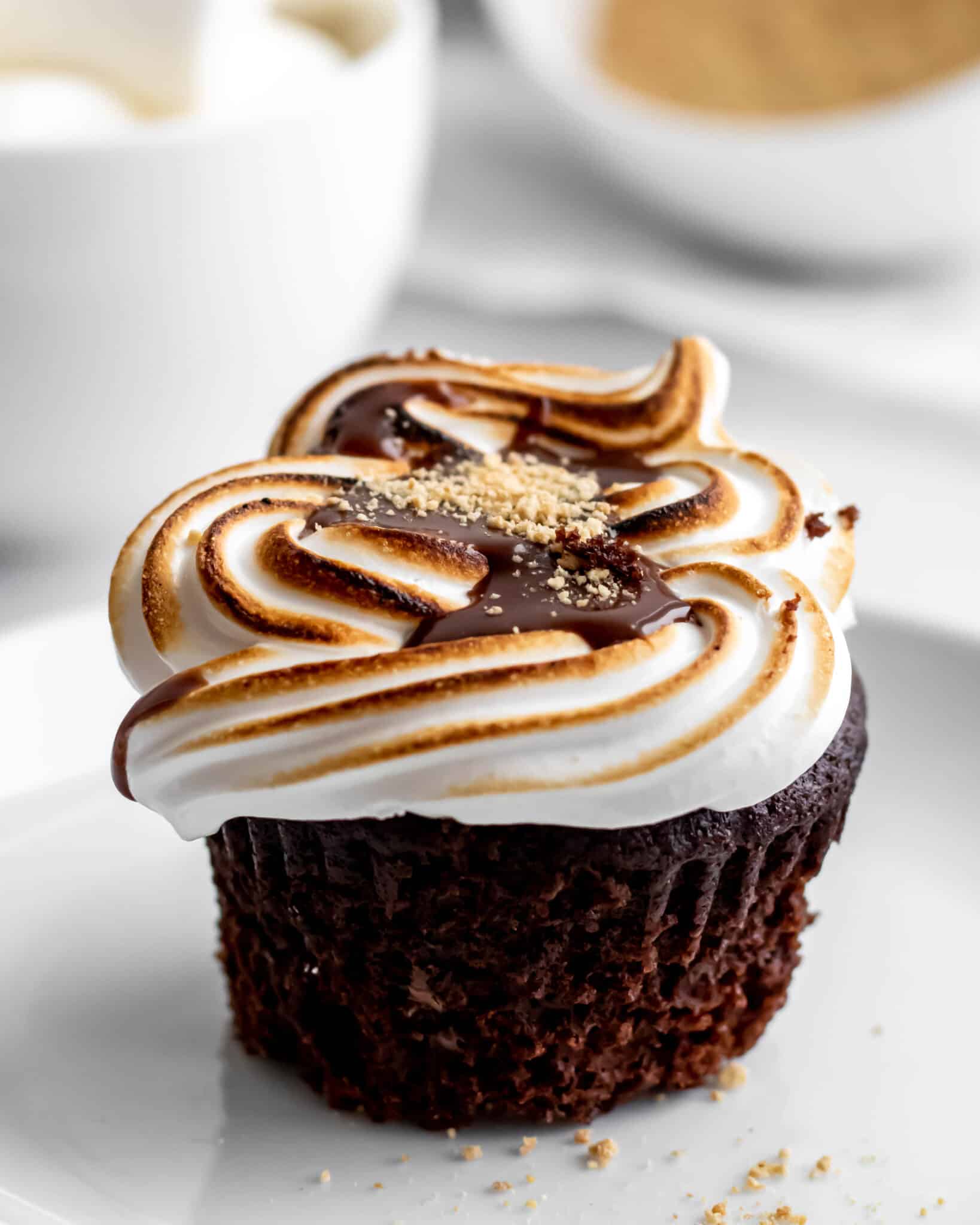
There are a lot of marshmallow frosting recipes out there that use store-bought marshmallow fluff as a base, which can be overly sweet and full of additives. This version, made completely from scratch, uses a classic Swiss meringue method, which delivers a glossy, stable, and cloud-like frosting that actually tastes like real toasted marshmallows. No weird aftertaste, no grainy sugar crystals - just smooth, pipeable perfection.
Don't let the idea of meringue intimidate you! This recipe is a lot easier than you might think, and I'll show you exactly how to make it at home, with step-by-step tips to get it right - even if you've never made a meringue before.
If you have ever wanted to enjoy the gooey, soft, marshmallow flavor of s'mores without needing to start a campfire, this homemade marshmallow frosting lets you bring all of that texture and flavor to your desserts (hello S'mores Brownies!) without the mess.
Jump to:
Why You'll Love This Recipe
- Make from scratch with natural ingredients.
- Smooth, glossy, and pipeable - holds its shape and toasts like a dream.
- Tastes like real marshmallows - not overly sweet or artificial.
Ingredients for Marshmallow Frosting
This homemade marshmallow frosting recipe is really just Swiss meringue, so you only need 4 simple ingredients to put it together. And it doesn't require a jar of marshmallow creme or any high fructose corn syrup.

- Egg Whites - Use large, free-range eggs if possible. It's best to use fresh eggs rather than carton egg whites, as the store-bought egg whites often won't whip up as well. Be very careful when separating the eggs, as the tiniest bit of yolk in the whites will stop them from whipping properly. You can keep the egg yolks to use later in something like pastry cream.
- Sugar - Superfine sugar is best (caster sugar), but granulated sugar will also work well - it just may take a little longer for the sugar granules to dissolve.
- Vanilla - Use vanilla extract or vanilla bean paste. Bean paste will make some pretty speckles in your marshmallow.
- Cream of Tartar - This stabilizes the egg whites and helps them maintain their stiff peaks. If you don't have cream of tartar, you can use twice as much lemon juice instead. However, keep in mind that your frosting might not be quite as stable without it.
See the recipe card for quantities.
How to Make Marshmallow Frosting
Homemade marshmallows have a reputation for being tricky to make, but this easy marshmallow frosting couldn't be simpler. It uses the same method as Swiss Meringue Buttercream, but without adding the butter. All the flavor and none of the fuss.

Make a Double Boiler
Create a double boiler by setting a heatproof bowl on top of a saucepan containing an inch of simmering water. Make sure the bottom of the bowl doesn't touch the water below. Keep the heat at medium-low so the water remains at a gentle simmer.
Add the egg whites, sugar, and cream of tartar to the bowl.

Dissolve Sugar
Whisk the mixture constantly until the sugar fully dissolves and the mixture feels warm.
To check if it's ready, rub a bit of the mixture between your fingers; if it still feels grainy, keep whisking. For precision, the egg whites should reach 160°F (71°C).

Whip
Transfer the mixture to the bowl of a stand mixer with a whisk attachment, and whip the egg whites on medium speed, gradually increasing to high speed.
Whip until stiff, glossy peaks form. Add the vanilla and continue to whip for a further 30 seconds.
The Science of Marshmallow Frosting
Heat turns the egg whites into a stable foam:
Heating the egg whites and sugar together does two things: dissolves the sugar to eliminate graininess and denatures the egg proteins. This allows the meringue to trap air more efficiently and hold stiff peaks, resulting in a gorgeous, smooth, yet fluffy texture that holds its shape. (You can read more about this in my pavlova recipe).
Sugar acts as a stabilizer:
The sugar doesn't just add sweetness; it helps protect the egg proteins from coagulating and curdling. It also slows down the foaming process so that finer, more stable bubbles are formed to create a silky-smooth, glossy texture.
Why it's more stable than French meringue:
Swiss meringue is more stable and less prone to deflating than French meringue (which is made by whipping raw egg whites and adding sugar gradually). That's why it's better for frostings.
Why it's different from Italian meringue:
Italian meringue involves drizzling hot sugar syrup into raw egg whites as they whip, which also creates a stable meringue and glossy frosting - but Swiss meringue is often preferred because it's less sweet, easier to control, and doesn't require a candy thermometer or sugar syrup skills.
Troubleshooting
Though there are just a few easy steps to make this fluffy marshmallow frosting, there are a couple of common mistakes to look out for.
- Grainy texture - If your meringue is gritty or grainy, it means the sugar wasn't fully dissolved during the heating stage. Before removing from the heat, rub a little of the mixture between your fingers - you shouldn't feel any grains at all. If you do, keep whisking gently over the heat until smooth.
- Won't whip to stiff peaks - Even the tiniest amount of egg yolk in your egg whites can stop them from whipping up properly. Fat is the enemy of meringue, so be very careful when separating your eggs. The same problem can occur if there is any trace of fat on your mixing bowl, so make sure it is squeaky clean. You can even wipe it down with a bit of lemon juice on a paper towel to make sure. Lastly, some carton egg whites just don't whip up well, so I always recommend using fresh eggs for meringue. You can save the egg yolks for another recipe, like some delicious pastry cream!
- Weeping or sticky beads - If your marshmallow frosting is weeping at all it has probably been over-whipped or exposed to too much humidity. Try to avoid storing in the fridge unless absolutely necessary as this can introduce a lot of moisture.

How to Use Marshmallow Frosting
This frosting can add some fluffy magic to so many desserts! I find it works best using a piping bag to create a lovely shape, but a knife or rubber spatula works great for a quick spread. Here are a few ideas to try:
- Cake Filling - This marshmallow frosting is stable enough to act as a filling for your favorite cakes. I love layering it with a moist chocolate cake!
- Cupcake Frosting - Swiss meringue pipes like an absolute dream. It's perfect for making intricate designs, especially if you're going to toast it after, like my S'mores Cupcakes (chocolate cupcakes with gooey chocolate filling and toasted marshmallow frosting).
- Pie Topping - Marshmallow is a great option for topping pies with! Pile it on top of your favorite fruit pie or chocolate pie for an extra layer of indulgence.
- S'mores Brownies - Smother this homemade marshmallow fluff all over the top of some fudgy brownies on top of a graham cracker crust, just like my S'mores Brownies.
- Crepe and Pancake Filling - Add to your sweet breakfast along with chocolate chips or chocolate sauce - yum!
- Cookies - Sandwich the delicious, fluffy frosting between cookies or macarons for a tasty marshmallow twist.
- S'mores Bar - This marshmallow frosting is a a great option for a DIY s'mores bar, because your guests won't need to heat up actual marshmallows, and it's a lot easier to work with than a jar of marshmallow fluff. Put it out with graham crackers, chocolate ganache, and some optional toppings for a fun dessert spread.
How to Toast Marshmallow Frosting
One of the best things about marshmallow frosting is how beautifully it toasts! Use a kitchen torch and very lightly run it over the surface of your meringue once it is on your finished dessert. It toasts very quickly, so be careful not to keep it in one spot too long or you risk burning the marshmallow.
The marshmallow will turn a gorgeous brown color and will taste just like toasted marshmallows on a campfire!

Equipment
- Saucepan
- Heatproof Bowl - Tip: if the bowl of your stand mixer is metal, you can just use that for your double boiler to avoid dirtying two bowls.
- Stand Mixer - Use a stand mixer with the whisk attachment, or alternatively, use a handheld electric mixer and a large mixing bowl.
Storage
This homemade frosting is best used immediately after making. It will hold its shape at room temperature for several hours. If you're frosting cupcakes or a cake, do it right away - it will set slightly as it sits.
If you make it ahead of time, you can keep it in the bowl with plastic wrap pressed directly onto the surface to prevent it from drying out, and leave at room temperature for up to 4 hours. Once piped onto baked goods, it will be good at room temperature for 6-8 hours. It will still be safe to eat for longer than this, but after 6 hours, there can be some weeping depending on the humidity where you are.
Avoid putting your marshmallow frosting in the fridge unless absolutely necessary as cold air can cause the meringue to deflate, become sticky, or develop condensation and weeping.
FAQ
If you have a question about this recipe that isn't answered here, feel free to write it in the comment section and I will get back to you as soon as I can.
The texture and flavor of marshmallow frosting is a little different from marshmallow cream, but in my opinion, it's better! It is less thick and sticky, which means you can pipe it easily (if you've ever tried to pipe marshmallow fluff, then you know it is not easy!).
This marshmallow frosting is also less sweet than the store-bought marshmallow fluff, and of course, is made with all-natural ingredients. Because of this, it doesn't last as long as it doesn't have chemicals in it to stabilize for long periods of time, so it's best used on the day.
You can definitely use them interchangeably for some things, but the results are slightly different.
Marshmallow frosting won't harden like a classic buttercream does, but the outside will dry out a little when exposed to air so it won't be sticky to the touch.
More Frostings
Fancy whipping up some more delicious frosting? Check these out:
Recipe

Marshmallow Frosting Recipe
Ingredients
- 4 Large Egg Whites (room temperature)
- 1 cup Superfine Sugar 200g (or granulated sugar)
- 1 teaspoon Vanilla Extract
- ½ teaspoon Cream of Tartar
Equipment
- Stand Mixer with whisk attachment
Instructions
- Create a double boiler by setting a heatproof bowl on top of a saucepan containing an inch of simmering water. Make sure the bottom of the bowl doesn't touch the water below. Keep the heat at medium-low so the water remains at a gentle simmer.
- Add the egg whites, sugar, and cream of tartar to the bowl and whisk together gently while they warm up. Whisk the mixture constantly until the sugar fully dissolves and the mixture feels warm. To check if it's ready, rub a bit of the mixture between your fingers; if it still feels grainy, keep whisking. For precision, the egg whites should reach 160°F (71°C).4 Large Egg Whites, 1 cup (200 g) Superfine Sugar, ½ teaspoon (½ tsp) Cream of Tartar
- Transfer the mixture to the bowl of a stand mixer with a whisk attachment fitted, and whip the egg whites on medium speed, gradually increasing to high speed. Whip until stiff, glossy peaks form.(If your stand mixer bowl is metal, you can just use that for the double boiler to save on dishes!)
- Add the vanilla and continue to whip for a further 30 seconds.Use immediately.1 teaspoon Vanilla Extract


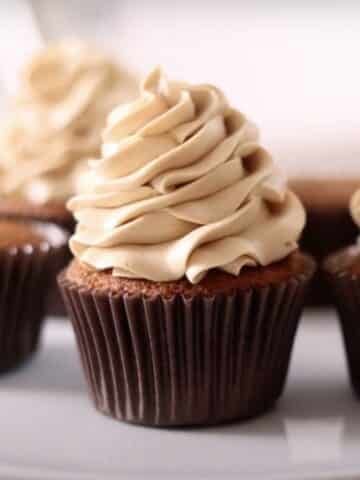

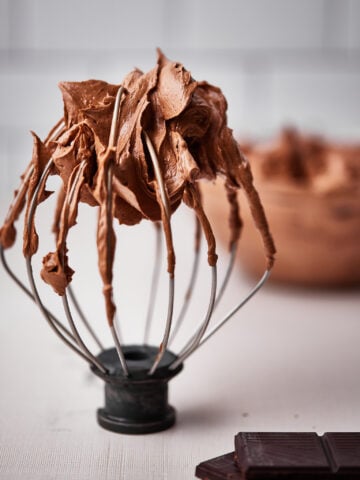


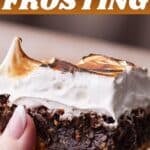
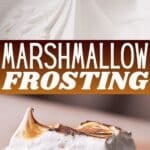
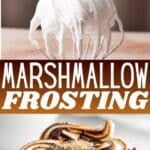




Chris Radwanski
This captures the whole essence of a smore! I swear if someone busted these out around a campfire, I would be all over them! Equally so, if someone brought them to my office. It would save on making a fire for a smore 🙂
Jules Grasekamp
I'd love to hear what you're planning on using your marshmallow frosting for!